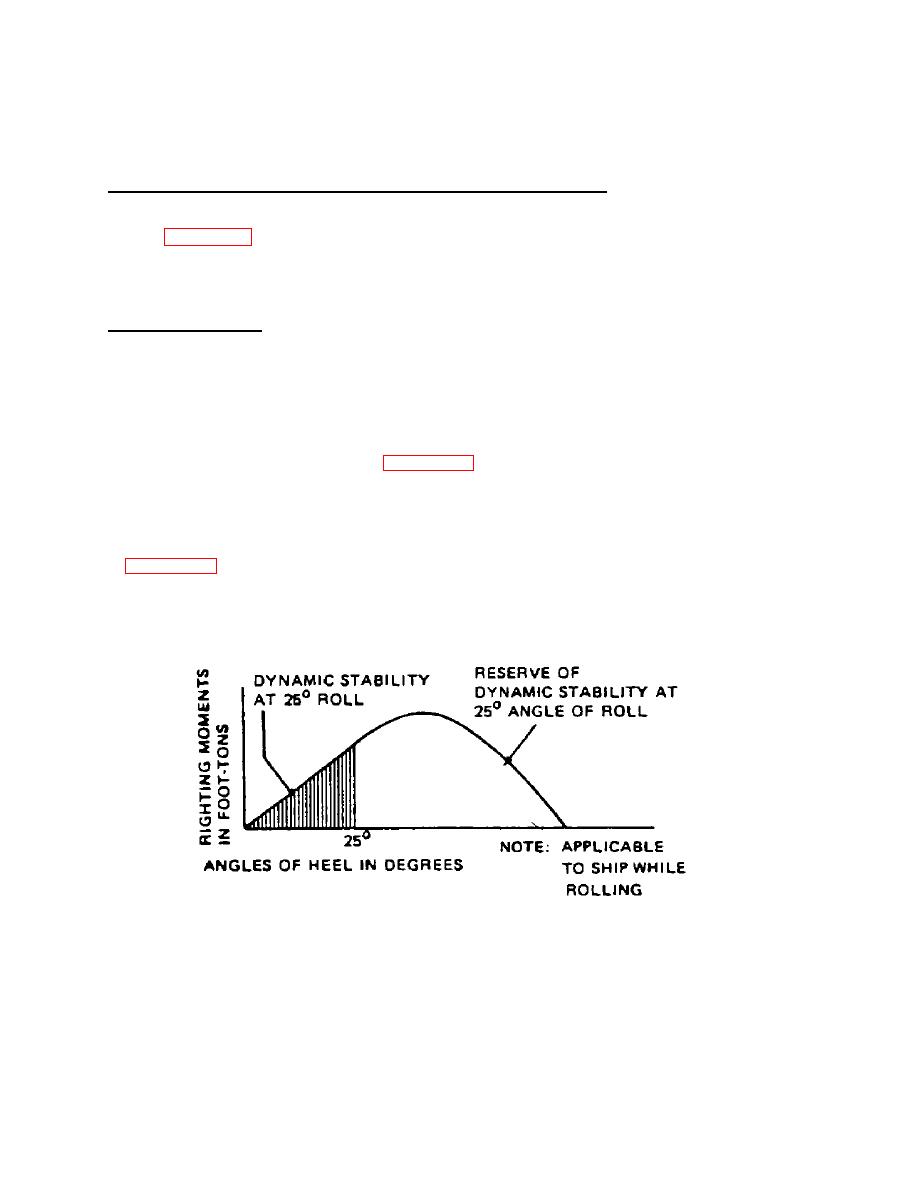
| Tweet |

Custom Search
|
|

|
||
 TM 55-1915-200-SDC
e.
Therefore, timing the roll is of little practical use in evaluating damaged stability. Knowledge of this
relation between period of roll and GM is useful in giving one the general feel of the ship in relation to her stability as she
rolls. A ship which has a logy roll has low GM; a stiff ship has high GM.
5-6.
ANGLE OF LIST AT WHICH MAXIMUM RIGHTING ARM (GZ) OCCURS. General information regarding angle
at which maximum righting arm develops:
a.
In FIGURE 5-2, the maximum value of the righting arm occurs at A, an angle of heel of about 39
.
b.
The angle at which the maximum righting arm develops is significant because it is the angle of inclination
beyond which the ship cannot safely assume a permanent list, even under ideal conditions in calm water.
5-7.
DYNAMIC STABILITY. The work that must be done on a ship to heel it over is equal to the moment with which
the ship resists inclination (righting moment) times the angle through which this moment acts. Hence, dynamic stability is
equal to righting moments times angles of inclination. If the cause of the inclination is removed, the dynamic stability
becomes available as energy to return the ship to its upright position.
In a sense, this is similar to the work done in compressing a spring. When the pressure is removed, the spring
can do work as it expands, delivering back the energy used to compress it.
On the ship's curve of righting moments (FIGURE 5-4), the area between the curve and the base represents the
product of the moments (measured vertically) times the angles (measured horizontally) through which the ship heels.
Therefore, the area under the curve up to a given angle represents the dynamic stability of the ship at that angle. That
amount of work must be done on the ship to heel it, and that amount of energy will become available to right the ship
when the cause of the inclination is removed.
In FIGURE 5-4, the dynamic stability at 25is represented by the shaded area. The un-shaded area under the
curve is the reserve of dynamic stability; i.e., the work that must be done beyond 25to continue heeling the ship until it
capsizes.
Figure 5-4. Ship' Curve of Righting Moments, Example.
s
5-4
|
||
 |
||